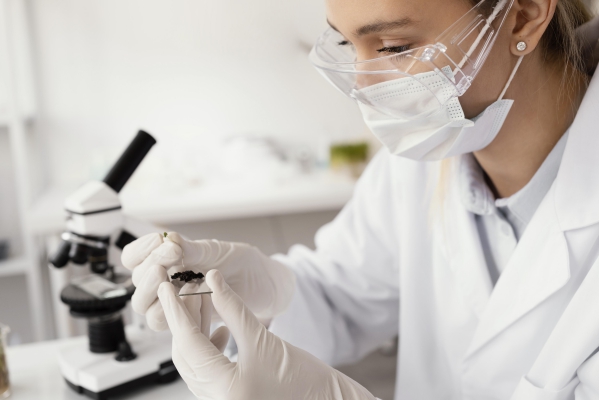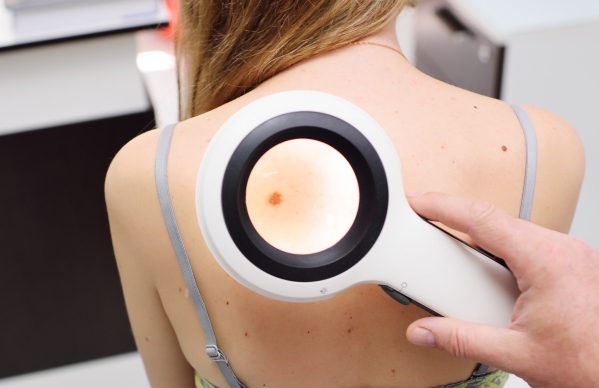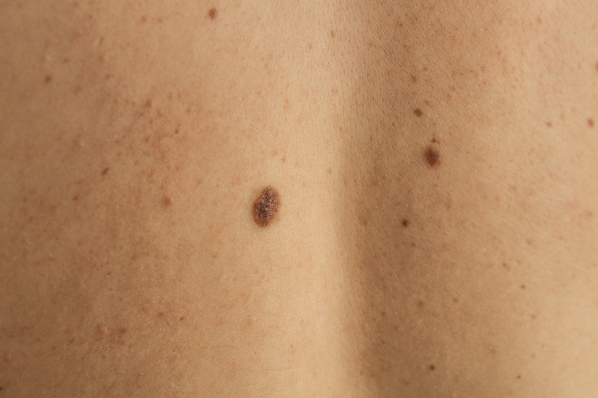What is basal cell carcinoma?
Basal cell carcinoma (BCC) is a type of skin cancer that begins in the basal cells- it is a type of cell within the skin that produces new skin cells to replace dead skin cells. BCC appears as a transparent bump on the skin with a rolled border, though it can have other forms. In addition, this type of skin cancer often occurs on areas of the skin that are exposed to the sun such as your face, head and neck.
The American Cancer Society (ACS) reports that the most common cancer in the United States is skin cancer, with BCC constituting the majority of cases. Each year there are 5.4 million American citizens diagnosed with skin cancer, 80% of them being BCC. Unfortunately, it causes at least 2000 deaths annually. Although BCC can affect people of all races, it rarely affects people with dark skin. In addition, men are affected twice as often as women by BCC due to increased occupational and recreational exposure to the sun. The risk of developing BCC increases with age with the peak incidence being people aged between 50-80 years.
What are the causes of basal cell carcinoma?
Basal cells are cells that are located at the bottom of the epidermis which is the outermost layer of the skin. Basal cells are responsible for the production of new skin cells and as these new skin cells are produced, they push older cells towards the surface where they die and are sloughed off. BCC occurs when one of the basal cells being produced develops a mutation in its DNA which results in uncontrolled multiplication and growth of the faulty skin cells. These abnormal skin cells accumulate and may form a cancerous tumour that appears at the surface of the skin. Ultraviolet light can cause damage to the basal cell’s DNA. However, this does not explain the formation of these tumours in areas not exposed to sunlight.

What are the risk factors for basal cell carcinoma?
There are several factors which may increase your risk of developing BCC and these include:
- Prolonged and chronic exposure to sunlight: Prolonged exposure to sunlight and severe sunburns increases your risk of developing BCC as the sunrays may damage your basal cell’s DNA resulting in the formation of a tumour.
- Light skin: The risk of developing BCC is higher in people who have fair skin as they have a decreased number of melanin pigment in their skin. Melanin is a pigment that gives colour to your skin and may block ultraviolet radiation, protecting the skin.
- Radiation therapy: Radiation therapy to treat certain skin condition such as acne may increase your risk of developing BCC at those treatment sites.
- Age: BCC may take several years to develop and people aged above 50 years are at higher risk of developing BCC.
- Family history: Having a parent or sibling affected by BCC increases your risk of developing the condition.
- Taking immunosuppressant drugs: Immunosuppressant drugs suppresses your immune system and increases your risk of developing BCC.
What are the signs and symptoms of basal cell carcinoma?
Basal cell carcinoma most commonly develops on sun-exposed areas of the body but may also develop on areas which are not exposed to the sun such as the genitals. The characteristics of basal cell carcinoma include:

- A pearly white, pink or skin-coloured skin growth: BCC often appears as a pearly white skin growth which is often translucent whereby tiny blood vessels may be seen. These skin growths are most commonly found on the ears and face. In addition, it may rupture, bleed and development a scab on the surface.
- A black, blue or brown lesion: The BCC lesion may also be brown, blue or black in colour.
- A rolled border: The edges of the lesion are raised or ‘rolled’. This lesions are most commonly found on the back or chest.
There are other conditions which may resemble basal cell carcinoma and these include:
- Dermatitis.
- Eczema.
- Intradermal nevus.
- Seborrheic keratosis.
- Bowen disease.
- Metastatic malignancies.
- Actinic keratosis.
- Malignant melanoma.
- Psoriasis.
- Squamous cell carcinoma.

Making a diagnosis
To make a diagnosis, your doctor will take a detailed history from you to know more about your symptoms. After the history taking, your doctor will perform a physical examination to look at the characteristics of the lesion. To confirm the diagnosis, your doctor may take a sample of the lesion (biopsy) to be sent to the laboratory for analysis. This is done to determine whether you have skin cancer and if so, to determine what type of cancer you have.

What are the treatments of basal cell carcinoma?
The main purpose of the treatment of BCC is to eradicate the cancer completely. The type of treatment you receive will depend on the location, type and size of the cancer. The different treatment options of BCC include:
- Surgery: Surgery is performed to remove the cancerous lesion as well as a healthy margin of skin to make sure that all cancer cells are removed. The healthy margin of skin tissue is examined under the microscope to look for cancer cells.
The following treatment options are usually considered if you cannot undergo surgery and these include:
- Radiation therapy: The type of treatment uses high energy beams to kill cancer cells. In addition, it may be used after surgery to ensure that any remaining cancer cells are killed.
- Freezing: This treatment option is also known as cryosurgery whereby your doctor uses liquid nitrogen to freeze the cancer cells after which they are removed using a curette- a scrapping instrument.
- Curettage and electrodessication (C and E): During this procedure, your doctor uses a curette to scrap off the cancer cells and uses an electric needle to stop any bleeding.
- Topical treatments: When surgery cannot be performed, pre ion creams or ointments may be used to treat thin and small BCCs.

In rare cases, the cancer may spread (metastasize) to other parts of the body and lymph nodes. In these cases, additional treatment such as targeted drug therapy or chemotherapy may be useful. In targeted drug therapy, special drugs are given by your doctor which focuses on the weaknesses of the cancer cells. Chemotherapy uses powerful drugs to kill the cancer cells and are usually used as a last resort.
What are the complications of basal cell carcinoma?
The complications of BCC include:
- Increased risk of developing other type of skin cancer.
- A risk of recurrence.
- Metastasis (spreading) of the cancer to other parts of the body.
Expectations (prognosis)
The prognosis for people with BCC is excellent and has a survival rate of 100% in cases where there is no metastasis. However, if BCC is left untreated, it may result in significant disfigurement and health issues if metastasized. Unfortunately, the recurrence rate is about 5%.

Source:
J. Alastair, I. and Simon, M., 2016. Davidson's Essentials of Medicine. 2nd ed. London: ELSEVIER.
Parveen, K. and Michael, C., 2017. Kumar & Clarks Clinical Medicine. 9th ed. The Netherlands: ELSEVIER.
Cameron MC, Lee E, Hibler BP, Barker CA, Mori S, Cordova M, et al. Basal cell carcinoma: Epidemiology; pathophysiology; clinical and histological subtypes; and disease associations. J Am Acad Dermatol. 2019 Feb. 80 (2):303-317.
Kim DP, Kus KJB, Ruiz E. Basal Cell Carcinoma Review. Hematol Oncol Clin North Am. 2019 Feb. 33 (1):13-24.
Bader, R., 2021. Basal Cell Carcinoma.



